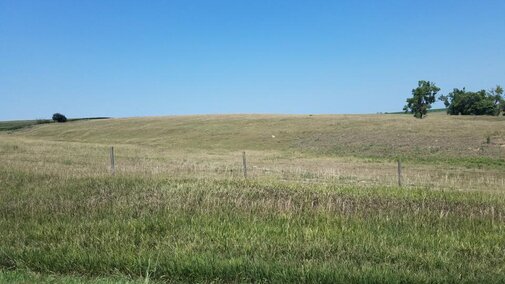Benefits of Legumes
Reducing pasture expenses can help your bottom line. But don’t try to starve a profit from your pastures. Sometimes you need to invest. This spring, invest in legumes.
Warm weather should get you looking forward to spring. I’m sure one thing you won’t look forward to, though, is paying for nitrogen fertilizer on your pastures.
Avoid this expense by adding legumes to your grazeland. Five years of grazing research in eastern Nebraska showed that brome/legume pastures produced almost four-tenths of a pound higher average daily gain on yearlings than straight brome pastures fertilized with 50 pounds of nitrogen.
That may not sound like a lot to you, but that much faster gain for the full season produced an extra 51 pounds of beef per acre, with no nitrogen fertilizer. Adding the value of heavier yearlings plus reduced fertilizer expenses can result in nice amount of profit, especially with the extra high fertilizer prices this year.
Similar research was conducted with warm-season grasses with nearly the same results.
March is a good month to start adding legumes. Red clover is the easiest one to establish because seed can be broadcast on pastures. With a little attention to controlling competition from the existing grass, new red clover plants can start increasing your pasture production by summer. The biggest risk we may have for establishment this year is a lack of moisture, but unless your pasture is irrigated, all we can really do there is hope and pray.
Don’t become trapped by the never-ending cost of nitrogen fertilizer. Use legumes to reduce costs and increase production.
Seed Selection to Combat Alfalfa Diseases
Alfalfa is Nebraska’s third-most valuable crop. As you think about selecting alfalfa varieties to plant this year, be sure to consider varieties available with greater resistance to diseases. Anthracnose and Phytophthora root rot are two of the most serious alfalfa diseases we are faced with here in Nebraska.
Anthracnose can appear anytime of the year on any age of alfalfa stand. Affecting the stems and crowns of the alfalfa plant, this disease can move rapidly and significantly lower alfalfa production in as little as one to two growing seasons. In some cases, disease stress can reduce alfalfa’s ability to withstand cold temperatures, resulting in winter kill.
Phytophthora root rot is a major cause of seedling death and the most common root rot affecting all stages of alfalfa. This pathogen can cause seedling damping off in new stands followed by plant death in wet conditions, occurring in as little as a few days. In established stands, Phytophthora root rot causes taproot issues resulting in up to a 50% yield loss and progressive decline over time and potential winter kill.
With both of these diseases, symptoms are most devastating on susceptible alfalfa varieties. Therefore, proper seed selection will be the first line of defense for disease management. Select varieties of alfalfa seed that have at least a moderate to high resistance to anthracnose and Phytophthora root rot to effectively prevent yield and stand losses. There are multiple races of anthracnose that have been identified to cause economic damage to alfalfa in the Midwest: Race 1, 2 and the newly discover more aggressive race 5. Be sure to consult your seed representative to get the best protection for your alfalfa fields as new varieties are coming to the market this year.

